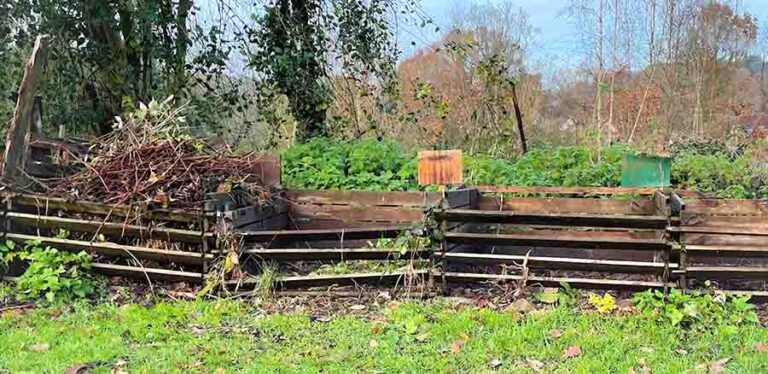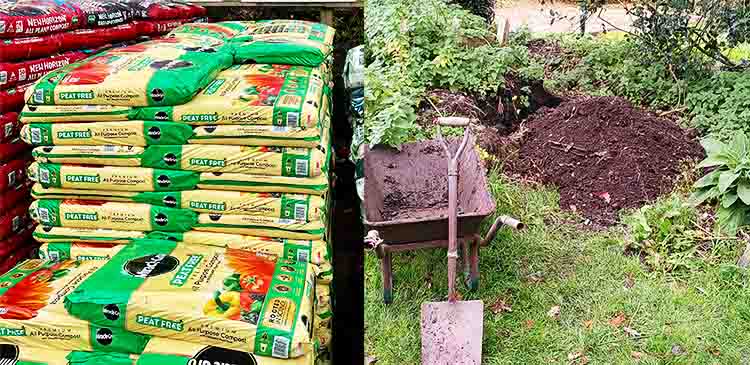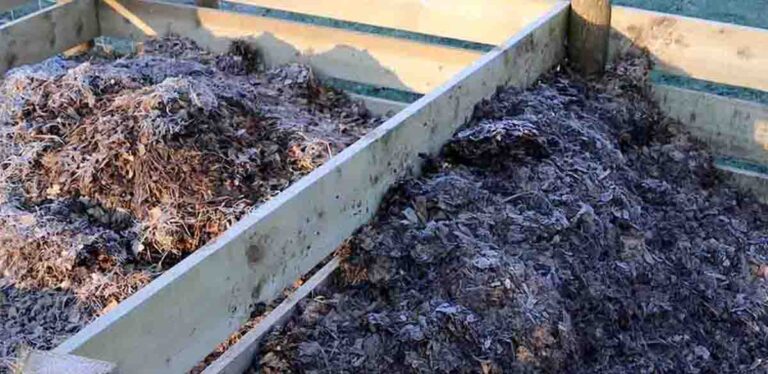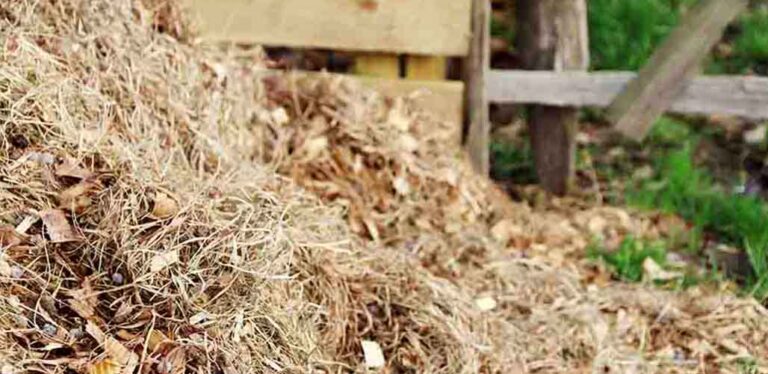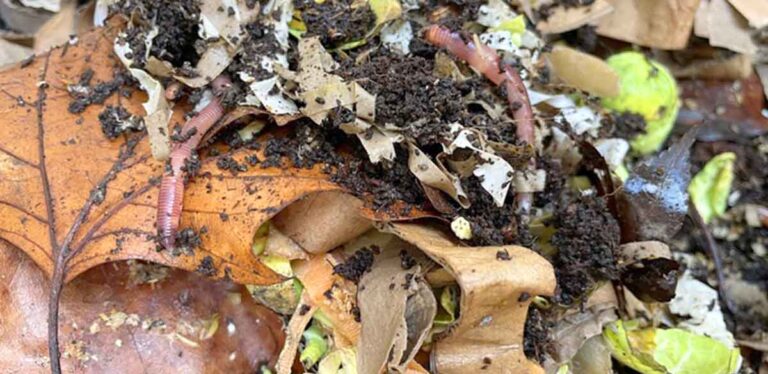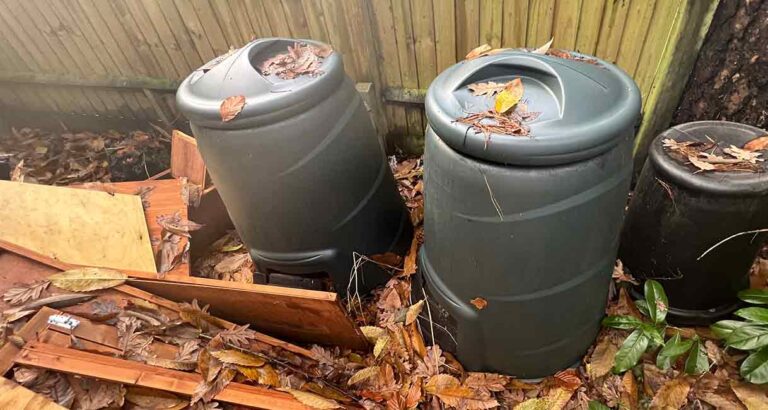Composting Wood Chips And Shavings
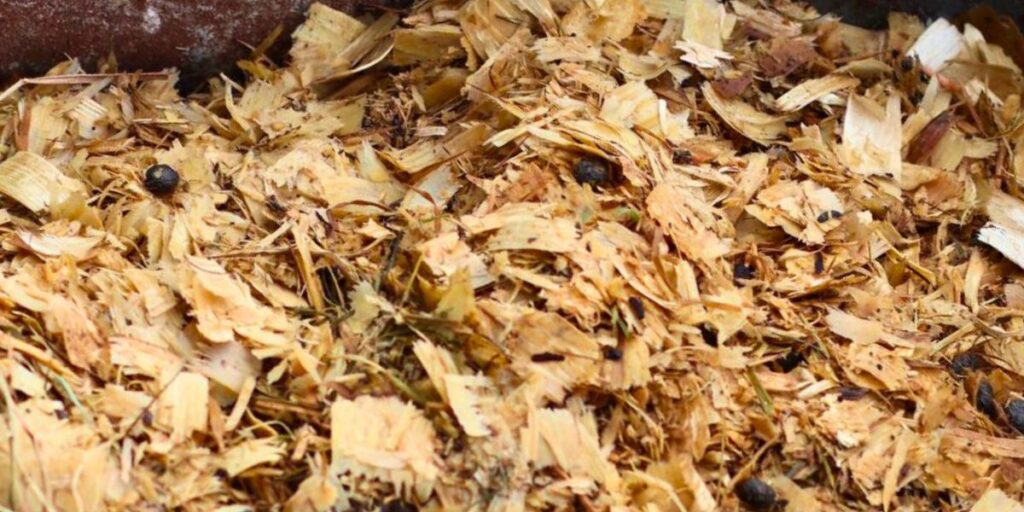
Composting wood chips and shavings is a little trickier than composting softer materials, but it can be done. If you have a surplus of woody material from animal bedding, pruning trees and shrubs in your yard, or a woodworking hobby, here’s how to recycle it into rich, swoon-worthy compost.
- Composting wood chips and shavings
- Adding wood shavings to your compost pile
- Composting wood chips
- Balancing ingredients
- How long does it take?
- Wood chips and shavings that cannot be composted
Composting wood chips and shavings
At its core, composting is turning dead plant material back into a nutrient-rich growing medium. Since wood chips and shavings come from trees and shrubs, it follows that they can be turned into high quality compost too. But, they contain a lot of lignin and cellulose – tough tissue structures that make woody stems rigid and strong. The presence of lignin and cellulose makes woody material slow to break down under normal composting conditions. Most wood chips and shavings can still be composted, but you might want to deal with them separately from your usual compost pile. It depends on how much you have, and how big the pieces are,
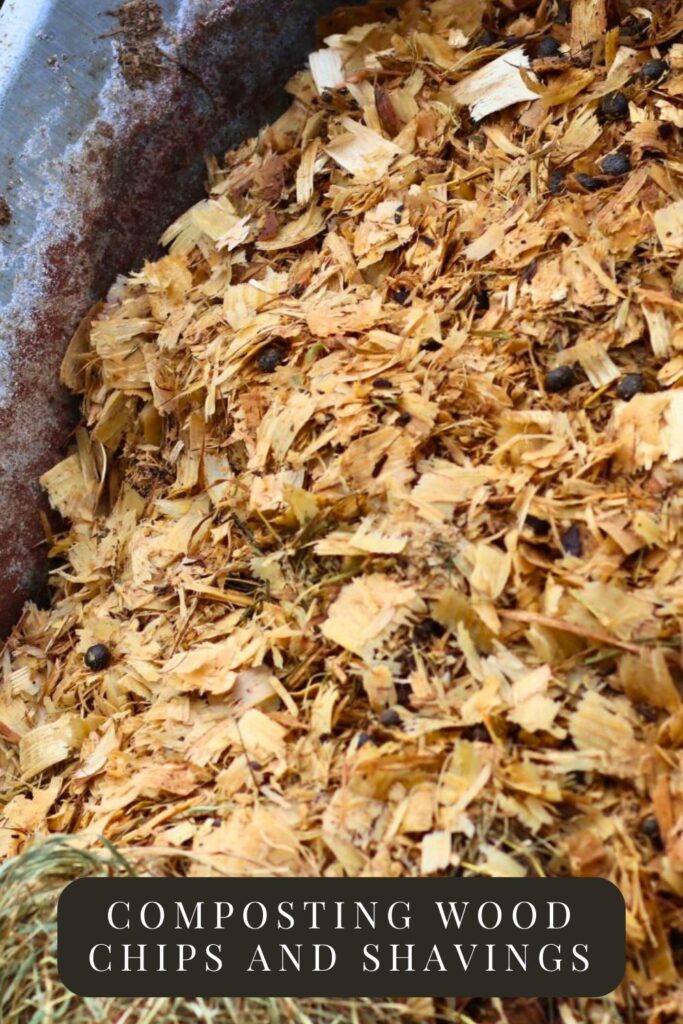
Adding wood shavings to your compost pile
Composting finely shredded wood shavings and sawdust is pretty straightforward. They can be added to your regular compost pile as a brown material. For example, Pippa keeps rabbits on her homestead, and beds them down on pine wood shavings. When she cleans her rabbits out, she adds the soiled bedding to her hot compost bay. In there it gets mixed up with an equal volume of green materials from grass clippings, vegetable scraps, and hay. The shavings are a welcome source of carbon, which the bacteria in her compost heap use to make energy. The pee and poop from her rabbits is a handy source of nitrogen too!

Once incorporated into an active compost pile, wood shavings break down in the normal way. Albeit it usually a bit slower than everything else. Even though they are quite thin flakes of wood, Pippa reports that her rabbit bedding is the last thing in her pile to disappear.
Composting wood chips
What about larger wood chips? For example the kind left behind from cutting back trees or pruning large shrubs and hedges. You can still turn these into compost. But their size means they will take 6 months or more to completely deteriorate under ideal hot composting conditions. And perhaps years to cold compost!
Since everything else you can compost is usually ready within a matter of weeks of being added to a hot compost pile, lots of gardeners don’t want to be kept waiting for wood to break down too. Which leaves you with a couple of options, depending on how many wood chips you have to dispose of:
- Small quantities of wood chips can be added to regular compost heap anyway. They’re useful for adding bulk and creating air pockets so that the helpful bacteria in your pile receive plenty of oxygen. When everything else has broken down they can be sieved out and returned to the next compost pile. There they’ll finish breaking down. Alternatively you can use compost with partially composted wood chips still in it as a moisture-trapping mulch for shrubs and fruit trees in summer.
- Large quantities of wood chips can be composted separately, on their own timescale. The traditional way to do this is using a windrow.
Wood chip windrows
At the community garden where I have a small plot for growing fruit and veg, a large overhanging tree has recently been drastically cut back. We’ve been left with this massive pile of woodchips, and even once we’ve all gratefully replenished our paths, there are still going to be a lot leftover. Which we could compost in a windrow.
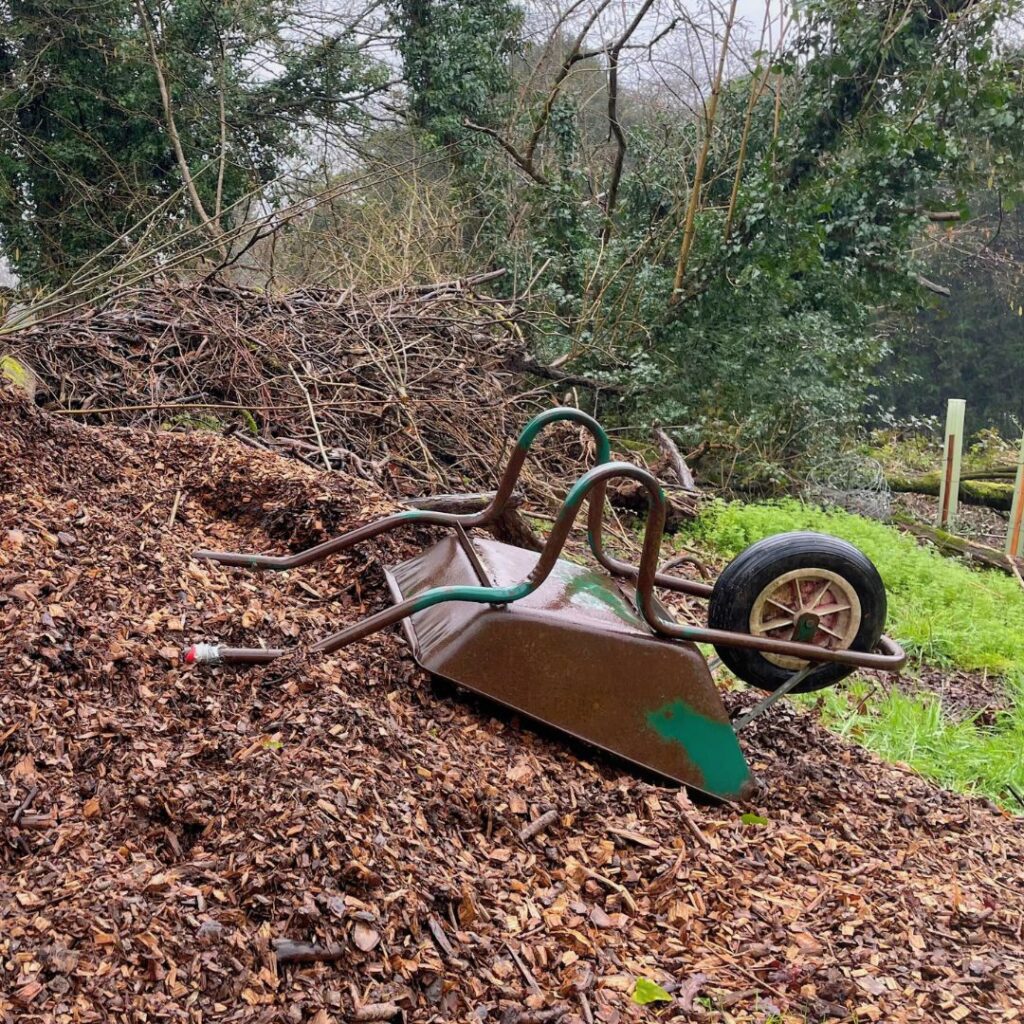
Windrows specifically dedicated to composting wood chips are larger than regular compost piles, and rely on hot composting. Their size means more internal volume, and the material at the edges insulates the material in the center. Which helps heat-loving decomposing bacteria to flourish and work on breaking it down. A windrow should be at least 4’ wide, 4’ deep, and 6’ long. You can make it longer, if you have that much wood chip to dispose of. Just don’t make it wider, because it will limit air flow to the center of the windrow. And don’t make it deeper, because the material at the bottom will get too compacted.
You’ll also need a compost heap thermometer to monitor the internal temperature of your wood chip pile. After it peaks, you’ll need to mix the contents of your pile to move material from the edges to the center.
Constructing a windrow
Wood chips are low in moisture, but bacteria need water to grow, to survive, and to move around in. So an important part of composting woody material is adding enough water for the composting bacteria to thrive. Writer and composting queen Alys Fowler recommends taking this approach to getting the contents of a windrow wet enough:
- Choose a 4’ by 6’ location for composting your wood chips, and dig a narrow moat around it – just wide and deep enough to dunk a bucket into.
- Add 4” of wood chips to your windrow at a time, and soak each layer thoroughly with water. Inevitably plenty of it is going to drain out from the bottom of the pile, which is where the moat comes in!
- Rather than continually adding fresh water from the tap, you can use a bucket to scoop water from the moat and add it to the top layer of wood chips.
The aim is to achieve 50-70% moisture content in your windrow. Which is a lot higher than in a regular compost heap, and another reason to compost large quantities of wood chip separately from the rest of your compostable materials. When your windrow is complete, you can either cover it with a tarp to trap the moisture, or take the fully traditional route, and make the top of the pile dipped in the middle, to trap rainfall.
Balancing ingredients
Whether you’re adding a few wood shavings to your rotary composter, or building a windrow to recycle a whole tree, you’ll need to think about balancing ingredients. Efficient composting relies on your compost pile containing roughly 30 parts carbon to every 1 part nitrogen. Carbon comes from ‘brown’ materials, and nitrogen from ‘green’ materials. Usually, adding equal quantities of green and brown materials gets the carbon-to-nitrogen balance just right. Because the nitrogen in green materials is much more ‘dilute’ than the carbon in brown materials.
Wood is a brown material, containing lots of carbon. In fact, wood contains so much carbon that if you add a lot of it to your regular compost pile, you might need to add more than an equal quantity of green material to offset it. Grass clippings and animal manure are useful concentrated sources of nitrogen. But some gardeners even add a nitrogen-rich fertilizer rom the garden center just in case.
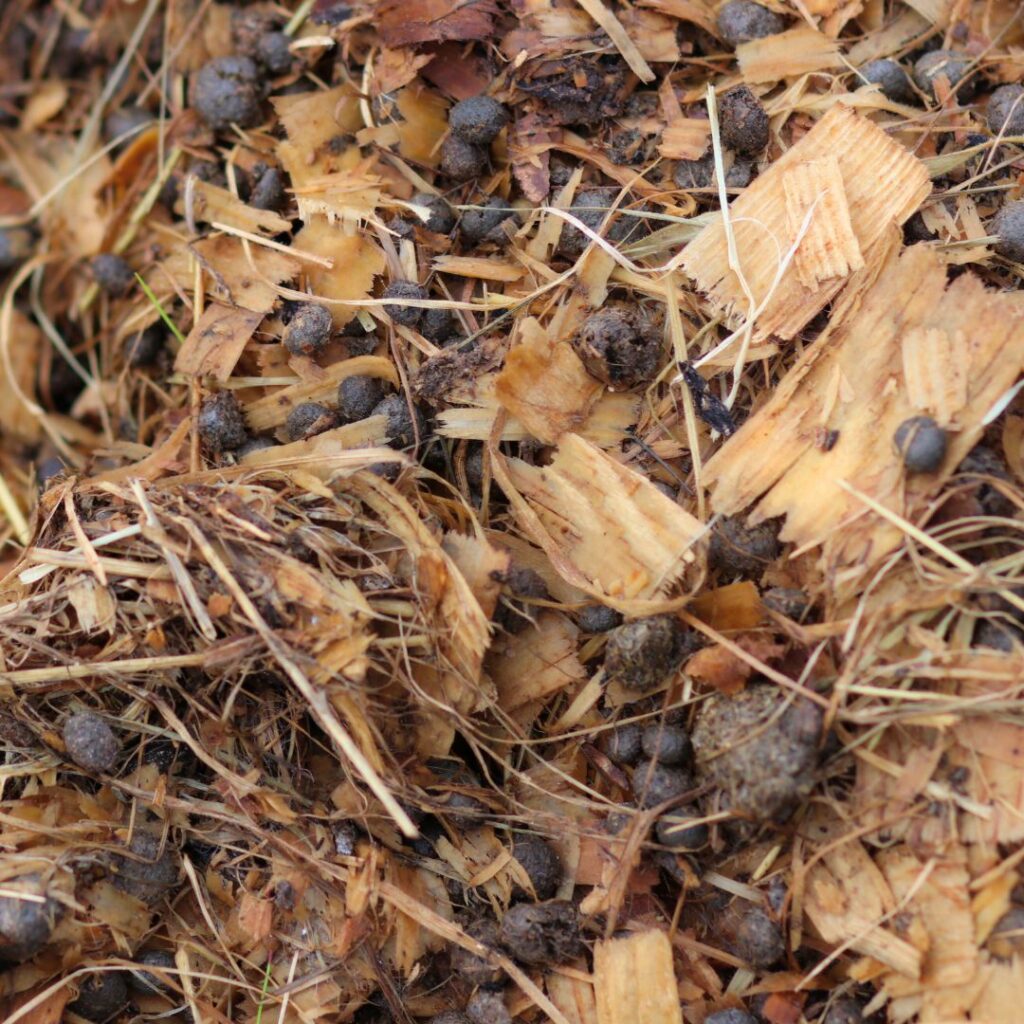
Counterintuitively, it’s not usual to add green materials to a windrow though. Adding green materials will cause it to break down faster. But the whole point of a windrow is to accept the fact that wood breaks down slowly, and allow it time to happen. And to save your green materials for your usual compost heap!
How long does composting wood chips and shavings take?
Inevitably, composting woody materials takes longer than composting soft material. Even under hot composting conditions, it will take a minimum of 5 or 6 months. And even longer if you’re composting a small volume, or the wood chips are large. This is the main drawback of composting woody material. But if you can’t wait that long, there’s nothing to stop you using compost from your pile or a windrow before the woody stuff in it is fully decomposed. Partially composted wood chips have a consistency similar to leaf mold, and they’re a great mulch for shrubs and fruit trees. Apply them in late spring to help trap moisture underground through the hot summer months.
Wood chips and shavings that cannot be composted
Most types of wood can be turned into compost. The species of tree that it come from isn’t important. Even woods which containing naturally occurring toxic compounds – like yew and walnut – are safe to compost. The toxins will break down and be neutralized by the composting process. Some gardeners like to let compost with walnut or yew cure for longer to be on the safe side though. Just set it to one side and use it the following year.
However, wood that has been treated with preservatives and fungicides shouldn’t be composted. Firstly, the chemicals in them are likely to inhibit the decomposition process, meaning you might never actually achieve compost. And secondly, it’s not safe for you to handle compost contaminated with them. So treated wood and lumber is best disposed of with your kerbside trash collection or at your local recycling center.
Composting wood chips and shavings – summary
Composting wood is slower than composting other materials. It takes the composting bacteria longer to breakdown the lignin and cellulose that makes wood ‘woody’. Small quantities of wood chips and shavings can still be added to your usual compost heap. But for large quantities, consider building a windrow and composting them separately.

